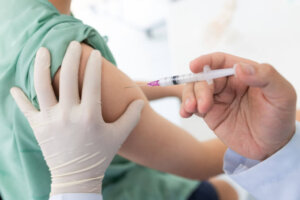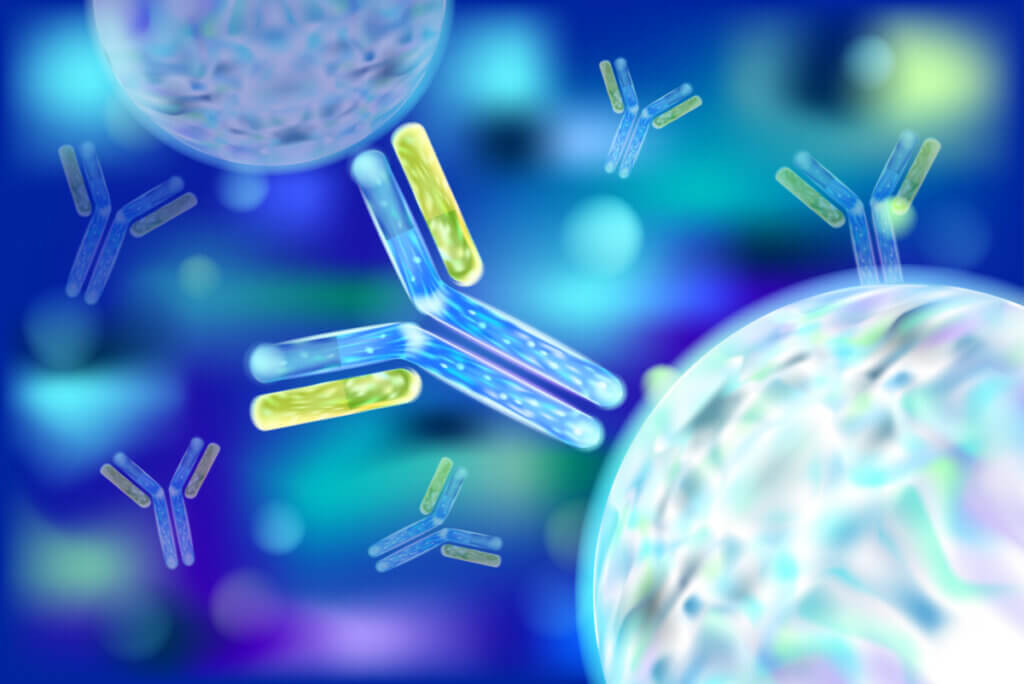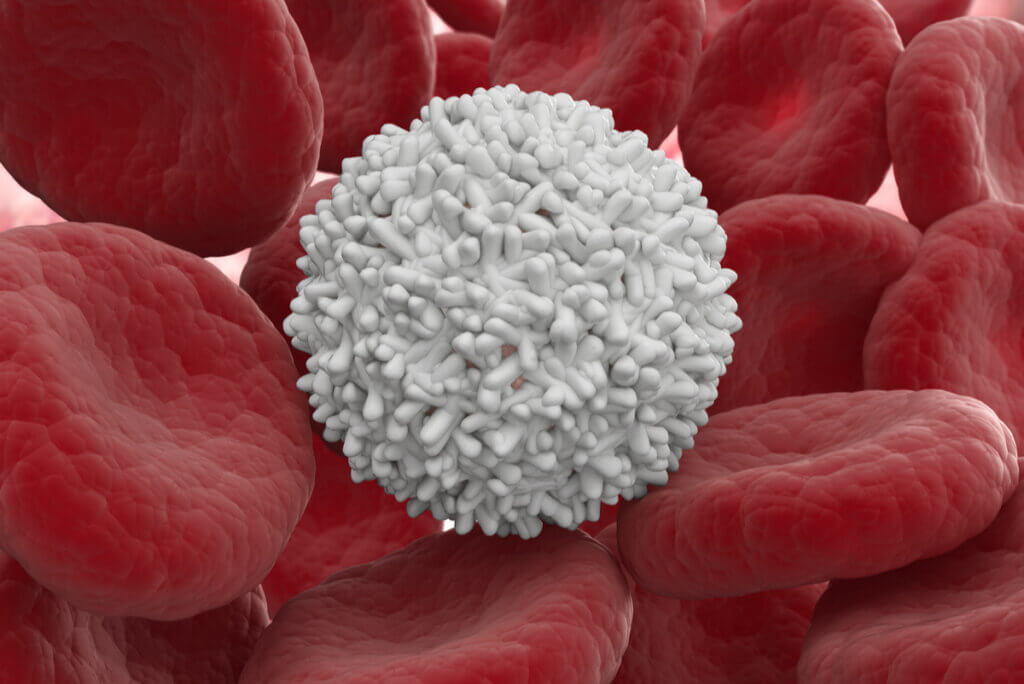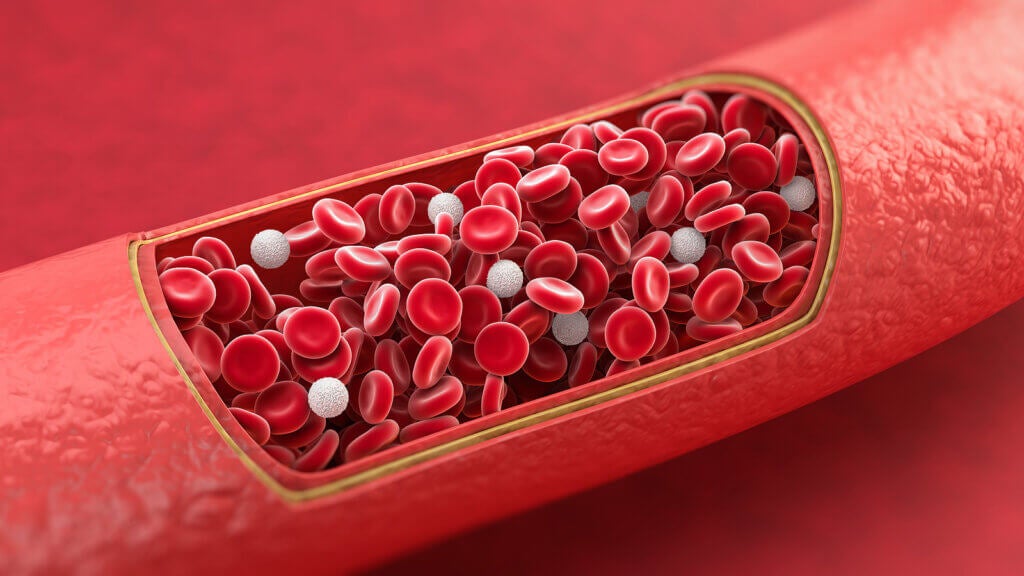The 2 Types of Immunity

The human body is in a constant battle against harmful agents, both internal and external, to ensure good health and prevent the onset of diseases. The body uses 2 types of immunity, one being innate and the other adaptive, which complement each other to achieve the objective.
Both innate and adaptive immunity belong to the immune system, which is the set of physical, chemical, humoral, and cellular barriers that fight against antigens. It’s important to remember that antigens are substances that the body recognizes as harmful and trigger a response.
Antigens are present in the etiological agents of infectious diseases, in transplanted organs, and even in some of our own cells. Depending on what is detected, the body will be able to trigger one of the 2 types of immunity.
How does the immune system work?
Before we can talk about the types of immunity themselves, it’s important to first understand how the immune system works. In this regard, the body must go through 4 different processes for its activation to occur. Among them are recognition, activation, regulation, and resolution.
The body must first recognize a foreign antigen before taking any action. This is one of the most important steps, as the type of immunity that will be activated will depend on it.
All of our cells contain a molecule on their surface called the major histocompatibility complex (MCH). This complex will tell the white blood cells if it’s a cell belonging to the body or a foreign organism. In this regard, a cell will be recognized as foreign when its surface molecule is different.
Many of the cells of the immune system are capable of detecting these foreign compounds or antigens, initiating the immune response. Once the first white blood cell attacks the invading agent, the synthesis of proteins called cytokines occurs.
Cytokines are intercellular communicators and will signal other cells to destroy the pathogen, thus initiating the activation process. Once the immune system is activated, the body must send a signal indicating when to stop attacking. That’s when the regulation process comes in.
The cells in charge of sending the corresponding signal in the 2 types of immunity will be the regulatory T lymphocytes. In this way, the attack by the white cells will be stopped, thus avoiding self-harm.
Finally, the resolution consists of the extermination of the pathogenic agent. In addition, it’s also the process in which the body will store the information necessary for the creation of specific antibodies.

Innate immunity
Innate immunity, also called natural immunity, is that which we obtain from the moment we’re born, so it doesn’t need exposure to a pathogen in order to be developed. Its main characteristic is that it’s not specific. It will attack all foreign agents in the same way, regardless of their effectiveness.
It’s a rapid response mechanism, ideal for fighting infections during the first days of life; the time it will take for the body to mount an appropriate immune response.
Defense mechanisms of innate immunity
This type of immunity has multiple defense mechanisms, the skin being the largest of all. The skin, mucous membranes, and eye membranes are the first barrier that the body has to stop attacks.
Studies have shown that these tissues, in addition to being a physical barrier, contain anti-infective agents such as complement factors, cytokines, and antimicrobial peptides. These compounds are the humoral factors that innate immunity relies on for the body’s defense.
Finally, there are cells that will be able to eliminate some of the most common infectious agents. These cells are white blood cells and each series performs a specific function:
- Neutrophils: these are cells specialized in the destruction and elimination of bacteria that may be harmful to the health of the individual.
- Eosinophils: these cells are specialized in eliminating parasitic organisms, some of which cause serious diseases such as gastroenteritis. In addition, they’re also involved in allergic responses.
- Monocytes and Macrophages: Macrophages originate from monocytes when they enter the body’s tissue and their main function is phagocytosis of bacteria, damaged cells, and dead cells.
- NK cells: also called natural killers, these are in charge of destroying the body’s own infected and cancerous cells.
There are also other cells, such as mast cells and basophils, which secrete substances that allow the activation of the immune system. Although these cells don’t destroy the pathogens themselves, they’re useful in many cases, such as allergic processes.
Adaptive immunity
Adaptive immunity, also known as acquired immunity, is one that requires exposure to a pathogen or a part of it in order to develop. In this regard, it’s more specific and effective than innate immunity.
One of the main characteristics of this type of immunity is the ability to remember pathogens. In this way, it will be able to attack the foreign organism effectively no matter how long it has been since the first infection.
In turn, adaptive immunity can be both active and passive. It’s active when it develops from direct contact with a pathogen. On the other hand, it’s passive when the necessary antibodies are developed without having to suffer from the disease. The most effective method in these cases is through the administration of vaccines.
Immunity will also be passive in those babies who are breastfed, as many of the antibodies produced by the mother will be transmitted through this route.
Adaptive immunity defense mechanisms

The cells in charge of defending the organism by adaptive immunity are lymphocytes. These are classified into 2 large groups: B and T. The first will be in charge of creating the antibodies, which provide the defense against specific agents.
On other hand, T lymphocytes are also divided into 2 groups: The collaborators that will help activate the immune system and the cytotoxic ones that will attack viruses and other harmful agents.
In order for lymphocytes to carry out their function, the mediation of antigen-presenting cells is necessary. This group of cells will phagocytose the harmful agent, processing and adapting its antigen so that the B lymphocyte recognizes it and produces the necessary antibodies.
The humoral factor of adaptive immunity is given by antibodies, which are proteins capable of recognizing a specific antigen and initiating its destruction. At present, 5 different types of antibodies have been recognized, which are the following:
- IgM: This is the first contact antibody that only appears when the antigen is first detected in the body and the response it triggers will be similar to that of innate immunity.
- IgG: This is produced when the body detects an antigen to which it has already been exposed. It’ll be able to trigger a more effective response by solving the clinical picture in the shortest possible time.
- IgA: These are the antibodies that are present in the body’s mucous membranes, defending this surface from the invasion of microorganisms.
- IgE: These are responsible for mediating and triggering all allergic and hypersensitivity reactions. In addition, it also participates in parasitic processes.
- IgD: This antibody is found on the surface of immature B lymphocytes, which is why it favors their maturation process.
General considerations regarding the types of immunity
The main difference between the 2 existing types of immunity is the ability of adaptive immunity to have memory and specificity. This makes it able to trigger an effective immune response, depending on the pathogen to which the individual has been exposed.
Both innate and adaptive immunity are necessary for the body’s defense. They work together every day to prevent the appearance of diseases.
The human body is in a constant battle against harmful agents, both internal and external, to ensure good health and prevent the onset of diseases. The body uses 2 types of immunity, one being innate and the other adaptive, which complement each other to achieve the objective.
Both innate and adaptive immunity belong to the immune system, which is the set of physical, chemical, humoral, and cellular barriers that fight against antigens. It’s important to remember that antigens are substances that the body recognizes as harmful and trigger a response.
Antigens are present in the etiological agents of infectious diseases, in transplanted organs, and even in some of our own cells. Depending on what is detected, the body will be able to trigger one of the 2 types of immunity.
How does the immune system work?
Before we can talk about the types of immunity themselves, it’s important to first understand how the immune system works. In this regard, the body must go through 4 different processes for its activation to occur. Among them are recognition, activation, regulation, and resolution.
The body must first recognize a foreign antigen before taking any action. This is one of the most important steps, as the type of immunity that will be activated will depend on it.
All of our cells contain a molecule on their surface called the major histocompatibility complex (MCH). This complex will tell the white blood cells if it’s a cell belonging to the body or a foreign organism. In this regard, a cell will be recognized as foreign when its surface molecule is different.
Many of the cells of the immune system are capable of detecting these foreign compounds or antigens, initiating the immune response. Once the first white blood cell attacks the invading agent, the synthesis of proteins called cytokines occurs.
Cytokines are intercellular communicators and will signal other cells to destroy the pathogen, thus initiating the activation process. Once the immune system is activated, the body must send a signal indicating when to stop attacking. That’s when the regulation process comes in.
The cells in charge of sending the corresponding signal in the 2 types of immunity will be the regulatory T lymphocytes. In this way, the attack by the white cells will be stopped, thus avoiding self-harm.
Finally, the resolution consists of the extermination of the pathogenic agent. In addition, it’s also the process in which the body will store the information necessary for the creation of specific antibodies.

Innate immunity
Innate immunity, also called natural immunity, is that which we obtain from the moment we’re born, so it doesn’t need exposure to a pathogen in order to be developed. Its main characteristic is that it’s not specific. It will attack all foreign agents in the same way, regardless of their effectiveness.
It’s a rapid response mechanism, ideal for fighting infections during the first days of life; the time it will take for the body to mount an appropriate immune response.
Defense mechanisms of innate immunity
This type of immunity has multiple defense mechanisms, the skin being the largest of all. The skin, mucous membranes, and eye membranes are the first barrier that the body has to stop attacks.
Studies have shown that these tissues, in addition to being a physical barrier, contain anti-infective agents such as complement factors, cytokines, and antimicrobial peptides. These compounds are the humoral factors that innate immunity relies on for the body’s defense.
Finally, there are cells that will be able to eliminate some of the most common infectious agents. These cells are white blood cells and each series performs a specific function:
- Neutrophils: these are cells specialized in the destruction and elimination of bacteria that may be harmful to the health of the individual.
- Eosinophils: these cells are specialized in eliminating parasitic organisms, some of which cause serious diseases such as gastroenteritis. In addition, they’re also involved in allergic responses.
- Monocytes and Macrophages: Macrophages originate from monocytes when they enter the body’s tissue and their main function is phagocytosis of bacteria, damaged cells, and dead cells.
- NK cells: also called natural killers, these are in charge of destroying the body’s own infected and cancerous cells.
There are also other cells, such as mast cells and basophils, which secrete substances that allow the activation of the immune system. Although these cells don’t destroy the pathogens themselves, they’re useful in many cases, such as allergic processes.
Adaptive immunity
Adaptive immunity, also known as acquired immunity, is one that requires exposure to a pathogen or a part of it in order to develop. In this regard, it’s more specific and effective than innate immunity.
One of the main characteristics of this type of immunity is the ability to remember pathogens. In this way, it will be able to attack the foreign organism effectively no matter how long it has been since the first infection.
In turn, adaptive immunity can be both active and passive. It’s active when it develops from direct contact with a pathogen. On the other hand, it’s passive when the necessary antibodies are developed without having to suffer from the disease. The most effective method in these cases is through the administration of vaccines.
Immunity will also be passive in those babies who are breastfed, as many of the antibodies produced by the mother will be transmitted through this route.
Adaptive immunity defense mechanisms

The cells in charge of defending the organism by adaptive immunity are lymphocytes. These are classified into 2 large groups: B and T. The first will be in charge of creating the antibodies, which provide the defense against specific agents.
On other hand, T lymphocytes are also divided into 2 groups: The collaborators that will help activate the immune system and the cytotoxic ones that will attack viruses and other harmful agents.
In order for lymphocytes to carry out their function, the mediation of antigen-presenting cells is necessary. This group of cells will phagocytose the harmful agent, processing and adapting its antigen so that the B lymphocyte recognizes it and produces the necessary antibodies.
The humoral factor of adaptive immunity is given by antibodies, which are proteins capable of recognizing a specific antigen and initiating its destruction. At present, 5 different types of antibodies have been recognized, which are the following:
- IgM: This is the first contact antibody that only appears when the antigen is first detected in the body and the response it triggers will be similar to that of innate immunity.
- IgG: This is produced when the body detects an antigen to which it has already been exposed. It’ll be able to trigger a more effective response by solving the clinical picture in the shortest possible time.
- IgA: These are the antibodies that are present in the body’s mucous membranes, defending this surface from the invasion of microorganisms.
- IgE: These are responsible for mediating and triggering all allergic and hypersensitivity reactions. In addition, it also participates in parasitic processes.
- IgD: This antibody is found on the surface of immature B lymphocytes, which is why it favors their maturation process.
General considerations regarding the types of immunity
The main difference between the 2 existing types of immunity is the ability of adaptive immunity to have memory and specificity. This makes it able to trigger an effective immune response, depending on the pathogen to which the individual has been exposed.
Both innate and adaptive immunity are necessary for the body’s defense. They work together every day to prevent the appearance of diseases.
- Reyes Martín E, Prieto Martín A, Díaz Martín D, Álvarez-Mon Soto M. Inmunidad innata e inmunidad adaptativa. Medicine – Programa de Formación Médica Continuada Acreditado. 2013; 11(28): 1760-1767.
- Castrillón Rivera L, Palma Ramos A, Padilla Desgarennes C. La función inmunológica de la piel. Dermatología Rev Mex 2008;52(5):211-24.
- Vega Robledo G. Inmunología para el médico general. La respuesta inmune. Rev Fac Med UNAM Vol. 2008; 51(3): 128-129.
- Hernández-Urzúa M, Alvarado-Navarro A. Interleucinas e inmunidad innata. Revista Biomédica. 2001;12(4):272-280.
- Prieto Martín A, Barbarroja Escudero J, Haro Girón S, Monserrat Sanz J. Respuesta inmune adaptativa y sus implicaciones fisiopatológicas. Medicine – Programa de Formación Médica Continuada Acreditado. 2017;12(24): 1398-1407.
- Díaz Martín D, Úbeda Cantera M, López Suárez A, Álvarez de Mon Soto M. Respuesta inmune innata y sus implicaciones fisiopatológicas. Medicine – Programa de Formación Médica Continuada Acreditado. 2017;12(24):1388-1397.
Este texto se ofrece únicamente con propósitos informativos y no reemplaza la consulta con un profesional. Ante dudas, consulta a tu especialista.







